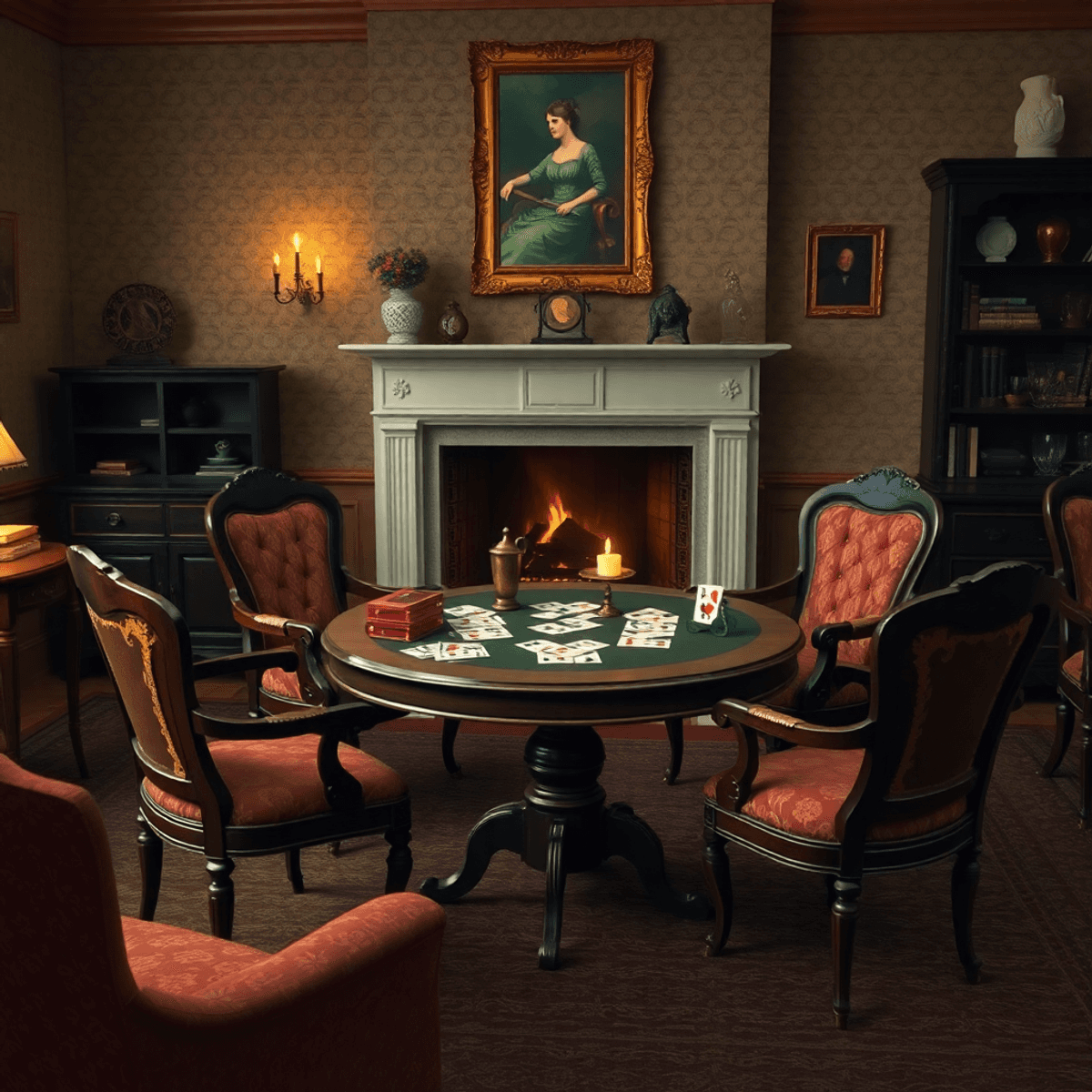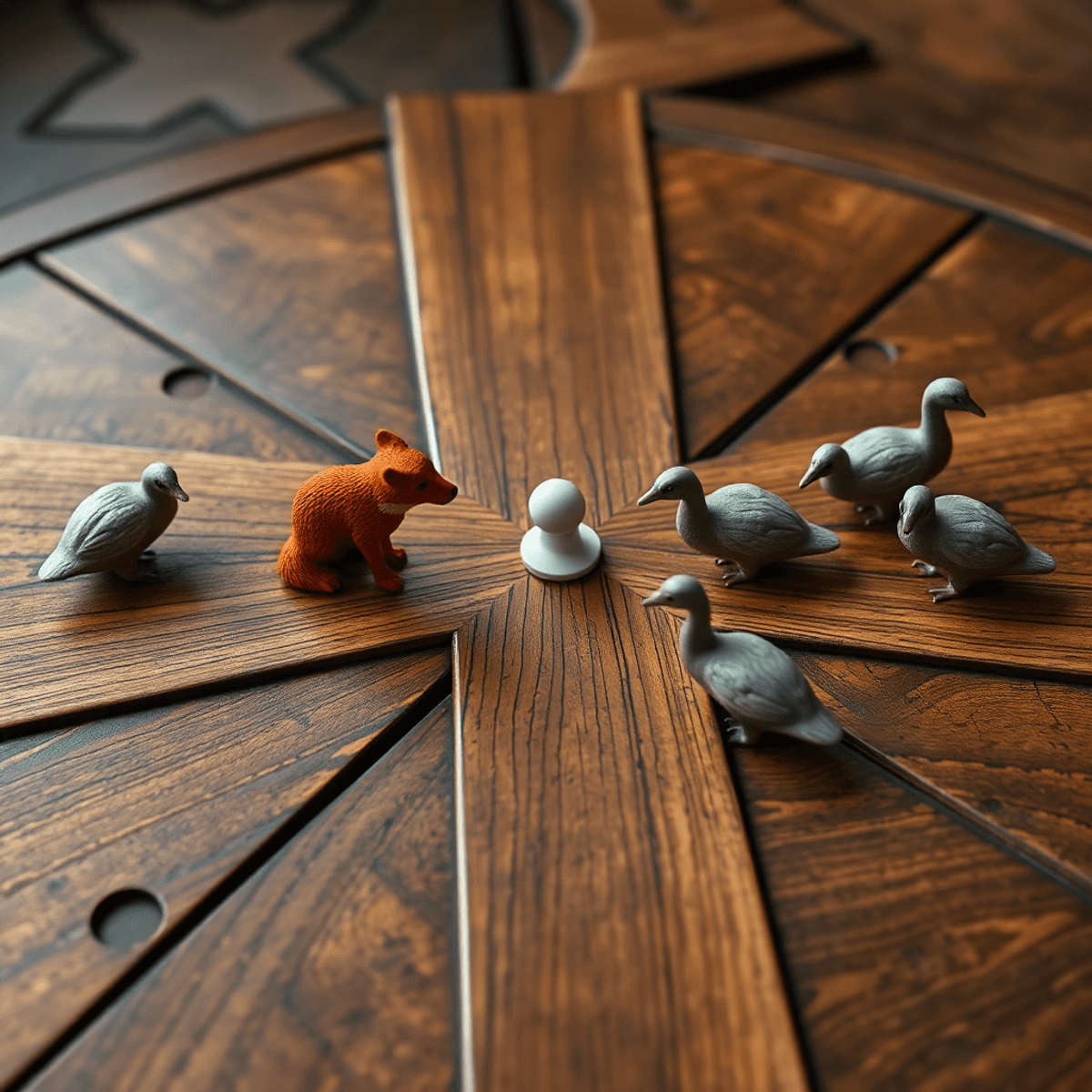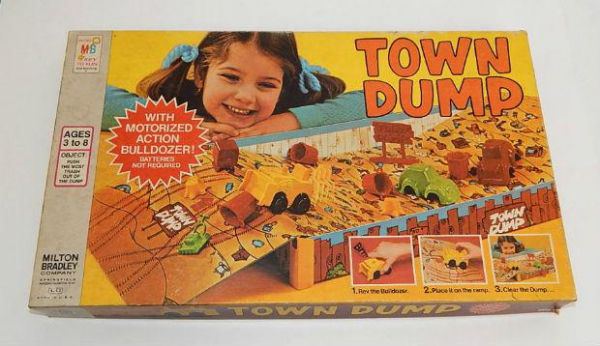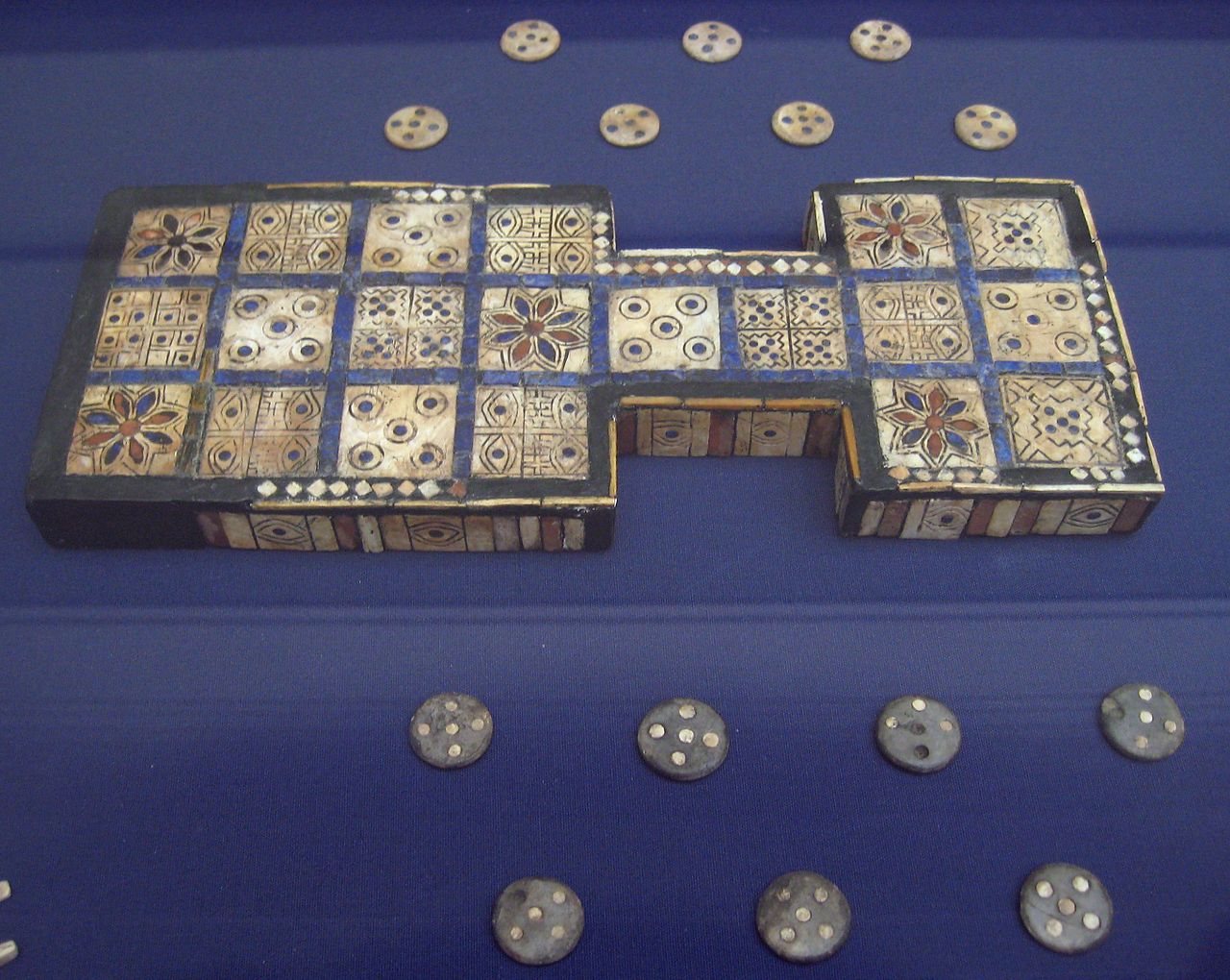
During the 1800s in Victorian England, a special kind of entertainment brought joy to people of all ages. Victorian parlour games became an essential part of social gatherings, turning quiet evenings into lively celebrations filled with laughter.
These games were more than just activities to pass the time – they were a vital aspect of Victorian social life. Whether it was a small family get-together or a large holiday party, parlour games provided opportunities for:
- Encouraging polite conversations between men and women
- Breaking down rigid social barriers
- Fostering long-lasting friendships
- Displaying cleverness and creativity
- Engaging in friendly competition
The strict rules of Victorian social etiquette found a playful outlet through these games. Young couples could interact under the watchful eyes of chaperones, children learned important social skills, and adults found relief from their everyday responsibilities. These often-overlooked games created a magical atmosphere where social constraints relaxed, and genuine connections blossomed.
The influence of these parlour games went beyond mere amusement – they became the thread that held Victorian society together, forging bonds that would endure for generations.
The Evolution of Parlour Games in the Victorian Era
Parlour games became popular during the Victorian era, a time when significant social and economic changes were happening in Britain. This period coincided with Queen Victoria’s reign from 1837 to 1901.

The Impact of the Industrial Revolution
The Industrial Revolution played a crucial role in the rise of parlour games. It brought about the growth of a prosperous middle class who had leisure time to enjoy such activities. As a result, homes began to have dedicated spaces for entertainment – known as parlours – where these games could be played.
Reflection of Social Etiquette
The games played during this time reflected the strict social etiquette of the era. Unmarried men and women had limited physical contact, so games like Blind Man’s Buff became particularly exciting as they provided rare opportunities for acceptable touch between the sexes under the guise of innocent play.
Values Embedded in Game Selection
The selection of parlour games often aligned with Victorian values:
- Intellectual stimulation – Word games and riddles showcased wit and education
- Moral development – Games incorporating penalties for misbehavior
- Physical restraint – Activities emphasizing controlled movements
- Social grace – Games teaching proper etiquette and manners
Class Distinctions in Gaming Preferences
Class distinctions also played a significant role in determining which games were played. Upper-class families preferred sophisticated word games and charades, while working-class households enjoyed more lively physical activities. The [Victorian middle class](https://www.english-heritage.org.uk/learn/story-of-england/victorian/middle-class/) often imitated upper-class gaming traditions as a way to showcase their social refinement.
Women’s Empowerment through Parlour Games
Women’s involvement in parlour games marked a shift from earlier restrictions on female leisure activities. These games offered socially acceptable opportunities for women to demonstrate intelligence and personality while still adhering to proper behavior.
Popular Forgotten Games
The Victorian era birthed numerous captivating parlour games that have faded into obscurity. These games sparked joy and excitement during social gatherings, creating memorable experiences for participants of all ages.
1. Blind Man’s Buff
This beloved Victorian game combined elements of trust, sensory perception, and playful mischief. The basic rules required:
- One player (the “Blind Man”) wearing a blindfold
- Other players forming a circle around the Blind Man
- The Blind Man spinning three times before attempting to catch others
- Players staying within designated boundaries while avoiding capture
- Caught players becoming the next Blind Man
Several intriguing variations emerged throughout the 1800s:
French Blind Man’s Buff: Players sat in chairs arranged in a circle. The blindfolded person had to sit on someone’s lap and guess their identity by touch alone.
Blind Man’s Wand: Instead of catching players, the Blind Man carried a stick to touch others, making the game safer for indoor play.
Historical records from Victorian children’s literature reveal Blind Man’s Buff’s popularity at Christmas gatherings. The game often featured in Charles Dickens’ works, including “A Christmas Carol,” where it brought joy to the Cratchit family’s modest celebration.
The game’s appeal lay in its ability to break down social barriers. Even Queen Victoria reportedly enjoyed rounds of Blind Man’s Buff at Windsor Castle, demonstrating how this simple game united people across social classes.
A unique aspect of Victorian Blind Man’s Buff involved the use of bells. Players would wear small bells, adding an auditory challenge for the Blind Man while creating a melodious atmosphere during play.
The game’s success relied heavily on:
- Trust between participants
- Quick reflexes and spatial awareness
- The thrill of near-captures
- Social interaction through physical movement
- The element of surprise when identities were revealed
2. Twenty Questions
The intellectual charm of Twenty Questions captivated Victorian minds through its elegant simplicity and strategic depth. One player, designated as the “answerer,” would select an object, person, or place while other participants took turns asking questions that could only receive “yes” or “no” responses.
Rules of the Game
The game’s rules established clear parameters:
- Players limited their inquiries to 20 questions
- Questions required simple yes/no answers
- The chosen subject could be anything known to the participants
- Players collaborated to solve the puzzle within the question limit
Victorian parlor guests particularly enjoyed the game’s ability to showcase wit and logical thinking. The most skilled players developed questioning strategies:
- Start with broad categories (Is it alive?)
- Narrow down physical properties (Is it larger than a breadbox?)
- Focus on specific details (Is it found in a Victorian home?)
The game’s popularity extended beyond casual entertainment, as it became a tool for developing deductive reasoning and vocabulary. Educational reformers recognized its value in teaching children critical thinking skills while maintaining an engaging social atmosphere.
A notable variation called “Animal, Vegetable, Mineral” emerged, where the answerer had to reveal which category their chosen item belonged to at the start. This adaptation added structure while preserving the game’s intellectual challenge, making it a staple of Victorian drawing-room entertainment.
3. Musical Chairs
Musical Chairs is a classic game that originated as a popular Victorian parlor entertainment. It combines music, movement, and friendly competition to create an enjoyable experience for players.
How to Play Musical Chairs
- Arrange chairs in a circle, with one chair less than the number of participants.
- Designate someone to play the piano or use a music player to play a lively tune.
- While the music is playing, participants walk, skip, or dance around the chairs.
- When the music stops, everyone must quickly find a seat.
- The person left standing without a chair is eliminated from the game.
- Remove one chair after each round and continue until only one person remains.
Enhancements by Victorian Hosts
Victorian hosts often added their own twists to make the game more interesting:
- Musical variations – Using different tempos and styles to influence players’ movements
- Chair arrangements – Creating intricate patterns instead of simple circles
- Special rules – Adding curtsey requirements or specific walking styles
Popularity Across Social Classes
The game’s popularity extended beyond social classes, making appearances at both humble family gatherings and extravagant Victorian parties. Children especially loved playing this game with nursery rhymes and folk songs as the musical backdrop.
Modern Adaptations
In recent years, Musical Chairs has evolved with new elements while still retaining its core charm:
- Dance moves between chairs
- Theme-specific music selections
- Team-based variations
- Inclusive versions where players share chairs
This timeless game continues to embody the spirit of Victorian entertainment by bringing people together through music, movement, and shared laughter.
Unique and Adventurous Games
During the Victorian era, several daring parlour games emerged that challenged traditional forms of entertainment. These games introduced elements of risk, surprise, and physical challenge to social gatherings, creating unforgettable experiences for those involved.
1. Snapdragon
One of the most infamous Victorian parlour games, Snapdragon, combined danger with festive cheer. Players would gather around a shallow bowl filled with brandy and raisins. The host would dim the lights and set the brandy on fire, creating an eerie blue flame that flickered across the surface.
The objective of the game was for players to:
- Quickly grab raisins from the flaming liquid
- Pop them into their mouths while still on fire
- Extinguish the flames by sealing their lips around the fruit
The sight of players reaching through the flames created shadows on their faces, adding to the game’s magical atmosphere. Snapdragon’s popularity was often referenced in Victorian literature, with Charles Dickens mentioning it in his Christmas stories.
This perilous pastime held special significance during Christmas celebrations when families would:
- Attach special meaning to retrieved raisins
- Make wishes while reaching through the flames
- View successful catches as signs of good luck
Despite its dangerous nature, Snapdragon remained a beloved Christmas tradition throughout the 1800s. The game’s allure lay in its ability to:
- Foster shared moments of controlled peril
- Challenge players’ bravery and skillfulness
- Generate excitement through risky behavior
Victorian hosts often added extra elements to enhance the game such as:
- Including nuts and candied fruits in addition to raisins
- Sprinkling salt on the flames for colorful effects
- Reciting specific verses while playing
The thrill of Snapdragon perfectly embodied the Victorian desire for entertainment that merged customary festivities with aspects of danger and exhilaration. This distinctive combination of risk-taking and celebration made it stand out among other parlour games during that period.
2. Hot Cockles
Hot Cockles is a fun Victorian parlor game that combines mystery, physical contact, and social interaction. It’s easy to set up with just a chair, a blindfold, and willing participants ready for an evening of laughter and entertainment.
How to Play Hot Cockles
The gameplay mechanics of Hot Cockles are simple yet engaging:
- One player (the guesser) kneels and places their head in another player’s lap.
- The guesser’s eyes are covered with a blindfold or their hands.
- Other players take turns striking the guesser’s palm, which is held behind their back.
- The guesser must identify who delivered the strike.
The Element of Disguise
Victorian party-goers particularly enjoyed the element of disguise in Hot Cockles. Players would often attempt to mislead the guesser by:
- Altering their approach to the guesser
- Changing the force of their strike
- Using different parts of their hand
- Attempting to stifle their laughter
Opportunities for Flirtation and Social Bonding
The social dynamics of Hot Cockles created opportunities for flirtation and social bonding, making it especially popular among young adults at holiday gatherings. Players developed creative strategies to avoid detection, such as tiptoeing or holding their breath to remain unidentified.
Popularity Across Social Classes
The game’s popularity spread across social classes, from modest family gatherings to elaborate Victorian Christmas parties. Its appeal lay in the perfect balance of physical contact, mystery, and the inevitable eruption of laughter when the guesser made incorrect – or surprisingly accurate – guesses.
Interestingly, you can find more about similar games in this Gutenberg resource that delves into various Victorian era pastimes. Additionally, an insightful PhD thesis available here explores the cultural significance and evolution of such games over time.
3. Puss in the Corner
Puss in the Corner is one of the most physically engaging Victorian parlour games, requiring quick thinking and nimble movements. The game requires five players and four corners – typically marked by furniture or chalk marks in a room.
How to Play
- Four players claim their corners while the fifth player, designated as “Puss,” stands in the center.
- The corner players must silently communicate and attempt to switch positions with each other.
- Players need to dash between corners without getting caught by Puss, who attempts to claim an empty corner during these exchanges.
Strategy Tips
- Use silent signals between corner players to coordinate your movements.
- Fake out Puss by pretending to switch corners but then staying put.
- Make quick decisions on when to dash between corners for optimal timing.
- Observe other players’ intentions carefully to anticipate their moves.
Historical records from the 1850s show Puss in the Corner gained popularity in both rural and urban households. The game’s appeal crossed age barriers – children enjoyed the physical chase aspects while adults appreciated the strategic elements and social interaction.
The game’s intensity could be adjusted by changing the room size or adding obstacles, making it adaptable for different spaces and player groups. Some Victorian families created variations where multiple “Pusses” prowled the center, increasing the challenge and excitement for larger gatherings.
The Social Impact of Parlour Games
Victorian parlour games created lasting bonds between families and friends, serving as a cornerstone of social interaction during an era without digital entertainment. These games transformed ordinary gatherings into memorable experiences, breaking down social barriers and encouraging genuine connections among participants.
Research from the Victorian Social History Archive indicates that regular game nights strengthened family relationships and fostered deeper friendships within communities. The shared experience of laughter, competition, and playful interaction created an atmosphere where even the most reserved individuals felt comfortable expressing themselves.
The social benefits of these games included:
- Building Trust: Games like Blind Man’s Buff required players to rely on each other, developing mutual trust
- Developing Empathy: Role-playing elements in games helped participants understand different perspectives
- Encouraging Communication: Word games and charades enhanced verbal and non-verbal communication skills
- Creating Shared Memories: The unique moments during gameplay became cherished memories for participants
Historical accounts reveal that parlour games played a crucial role in courtship rituals, allowing young men and women to interact in socially acceptable ways. These games provided opportunities for subtle flirtation and getting to know potential partners while maintaining proper Victorian decorum.
The psychological benefits of shared laughter and play during these games strengthened social bonds in ways that formal interactions couldn’t achieve. Studies in historical psychology suggest that the endorphins released during group play activities created positive associations with social gatherings, encouraging people to maintain regular social connections.
Revival of Victorian Parlour Games Today
The digital age has sparked an unexpected resurgence of Victorian parlour games. A recent study by the Entertainment Retailers Association reveals a 40% increase in interest for vintage entertainment among young adults aged 18-35.
Modern Adaptations of Classic Games
Modern party hosts are rediscovering these classic games, adapting them with contemporary twists:
- Blind Man’s Buff now incorporates noise-canceling headphones and motion sensors for added challenge
- Twenty Questions gets updated through social media platforms, with players using emoji clues
- Musical Chairs transforms into themed versions featuring popular music genres and creative seating options
The Rise of Vintage Gaming Clubs
Local vintage gaming clubs have emerged in major cities, attracting enthusiasts who seek authentic Victorian entertainment experiences. The Brooklyn Parlour Games Society reports over 500 active members who gather monthly to play traditional games.
Incorporating Victorian-Inspired Activities
Event planners have noticed this trend, incorporating Victorian-inspired activities into:
- Corporate team-building exercises
- Wedding reception entertainment
- Birthday party activities
- Holiday celebrations
Digital Adaptations for Virtual Gatherings
Digital adaptations of these games have also appeared, with mobile apps recreating classic parlour games for virtual social gatherings. These modern interpretations maintain the core elements of social interaction while embracing technological innovations.
Nostalgia and Themed Events
The nostalgia for vintage pastimes has inspired themed cafes and entertainment venues to host regular Victorian game nights, complete with period-appropriate decorations and costumes. These events attract diverse crowds, from history enthusiasts to young professionals seeking unique social experiences.
Conclusion: Embracing the Enduring Legacy of Victorian Entertainment
The charm of Victorian parlour games lies in their ability to create genuine human connections – a precious commodity in our digital age. These forgotten gems offer a refreshing alternative to modern entertainment, bringing the magic of face-to-face interaction back into our social gatherings.
The simplicity and adaptability of these games make them perfect for:
- Family reunions
- Holiday celebrations
- Birthday parties
- Team-building events
- Casual get-togethers
The legacy of Victorian entertainment reminds us that the most meaningful moments often come from shared laughter, friendly competition, and the joy of playing together. By incorporating these historical pastimes into contemporary gatherings, we keep alive a tradition that has brought joy to generations.
Ready to step back in time? Consider hosting your own Victorian game night. These timeless activities might just become your guests’ new favorite party entertainment, proving that some forms of fun never go out of style.
If you want to learn more about history of forgotten and obscure board games check our in depth guide – Lost but Not Forgotten: The History of Obscure and Vanished Board Games.





